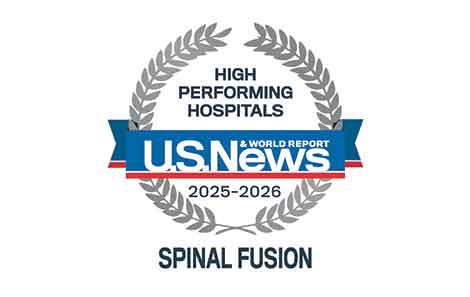Spinal Fusion With Instrumentation
Make an Appointment
For the Charlottesville area:
For Culpepper:
Spinal fusion joins together (fuses) 2 or more spine bones (vertebrae).
Spinal fusion treats many spine conditions, including:

Nationally Recognized Spinal Fusion Care
U.S. News & World Report has named our spinal fusion care as "high performing." That means it ranks as among the best in the country.
See How We RankSpinal Fusion at UVA Health
Spinal fusion is part of the full range of expert spine care you can access at UVA Health. Our experienced surgeons have extra training in both:
- Minimally invasive spine surgery
- Spinal deformity
Minimally invasive surgery uses techniques that help you recover faster with less pain. Our expertise in spinal deformity means we're prepared to handle even the most complex cases.
We'll match you to the best type of spinal fusion for your body and specific condition.
Request our free spine treatment guide.
Spinal Fusion Procedure
The surgery mimics the way pieces of a broken bone heal back together.
We use a bone graft to seal the vertebrae together. The bone may come from your own body (autograft) or a donor (allograft). We also use instrumentation to stabilize your spine. This can include implants like rods, screws, plates, and other devices.
In some cases, we can use custom implants made to fit your body. These devices are less likely to fail and do a better job aligning your spine. You can't find this advanced technology everywhere.